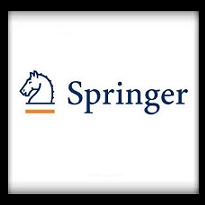دانلود مقاله ترجمه شده جداسازی هلو درزمان برداشت و پس از برداشت بر اساس نرمی گوشت – مجله الزویر
|
دانلود رایگان مقاله انگلیسی + خرید ترجمه فارسی
|
|
| عنوان فارسی مقاله: | رسیدگی هلو: تفکیک درجه نرمی گوشته هلو درزمان برداشت و پس از برداشت |
| عنوان انگلیسی مقاله: | Peach ripening: Segregation at harvest and postharvest flesh softening |
| مشخصات مقاله انگلیسی (PDF) | |
| سال انتشار | ۲۰۱۳ |
| تعداد صفحات مقاله انگلیسی | ۷ صفحه با فرمت pdf |
| رشته های مرتبط با این مقاله | کشاورزی |
| گرایش های مرتبط با این مقاله | زراعت و اصلاح نباتات، فیزیولوژی و فناوری پس از برداشت محصولات باغبانی، بیوتکنولوژی و ژنتیک مولکولی گیاهان باغبانی، ژنتیک بیومتری و مهندسی ژنتیک، فیزیولوژی و اصلاح درختان میوه و علوم باغبانی |
| مجله | زیست شناسی و فناوری پس از برداشت (Postharvest Biology and Technology) |
| دانشگاه | وزارت محصولات کشاورزی، سانتیاگو، شیلی |
| کلمات کلیدی | بافت،سفتی گوشت، بلوغ (رسیدگی)، میوه هسته دار،شاخص برداشت |
| شناسه شاپا یا ISSN | ISSN ۰۹۲۵-۵۲۱۴ |
| لینک مقاله در سایت مرجع | لینک این مقاله در سایت ساینس دایرکت |
| نشریه | Elsevier |
| مشخصات و وضعیت ترجمه مقاله (Word) | |
| تعداد صفحات ترجمه مقاله | ۱۵ صفحه با فرمت ورد، به صورت تایپ شده و با فونت ۱۴ – B Nazanin |
| ترجمه تصاویر | ترجمه توضیحات زیر تصاویر انجام شده و اشکال و نمودارها به صورت عکس در فایل ترجمه درج شده است. |
فهرست مطالب:
چکیده
۱ مقدمه
۲ مواد و روش ها
۲ ۱ مواد میوه
۲ ۲ تفکیک کلاس های رسیدگی
۲ ۳ پایش نرمی گوشته طی فرایند پس از برداشت
۲ ۴ آنالیز داده ها
۳ نتایج و بحث
۳ ۱تفکیک کلاس های رسیدگی در زمان برداشت
۳ ۲ همبستگی بین پارامتر ها
۳ ۳ پایش نرم شدگی گوشته پس از برداشت
۴ نتیجه گیری
بخشی از ترجمه:
تعیین زمان بهینه برداشت هلو یک فرایند حیاتی است زیرا تنظیم کننده سرعت نرم شدن طی دوره پس از برداشت بوده و از این رو تعیین کننده طول عمر بالقوه نگه داری میوه است.تفکیک هلو ها با سفتی و مقاومت گوشته متفاوت در زمان برداشت، که در دامنه بین ۱۰۰ و ۴۰ نیوتون تعیین می شود می تواندبا شاخص های IAD و زاویه رنگ زمینه صورت پذیرد. بین این دو شاخص، IADزمانی که برای کل میوه با سوزن تعیین شد دارای همبستگی بالایی بود.تعیین فشار تک محوری همبستگی ضعیف تری را با ویژگی های اپتیکی پوست نشان داد.
هنگامی که هلو به مرحله رسیدگی می رسد، که این فرایند معمولا در آخرین بخش زنجیره تجاری رخ میدهد، زاویه رنگی زمینه یک شاخص خوب و معتبر از خواص مکانیکی میوه نخواهد بود زیرا این شاخص تنها اندکی بعد از برداشت تغییر می کند در حالی که IAD همبستکی نزدیکی با بافت میوه دارد.در این دامنه سفتی،سوزن قادر به تعین تغییرات سفتی نخواهد بود زیرا میوه بسیار نرم است. در حالی که مقاومت فشاری و پیستون ۷.۹ میلی متری قادر به تعیین این تغییرات هستند.
نتایج ما به وضوح نشان می دهد که رفتار رسیدگی یکی از مشخصه های اصلی هر رقم بوده و این که این رفتاررا بایستی با روش های مفید و جدید از حیث دامنه سفتی نمونه ها پایش کرد. این رویکرد موجب تسهیل در برنامه ریزی روش های مناسب پس از برداشت شده و به نوبه خود کیفیت محصول را ارتقا می بخشد.
بخشی از مقاله انگلیسی:
۱٫ Introduction Predicting thepotentiallifespanof apeachalong the commercial chain is crucial to planning the storage, transport, and postharvest handling and selling to guarantee high fruit quality and consumer satisfaction. A first point to be considered is the fruit physiological state at harvest because peach shelf-life performance is heavily determined by its ripeness at this key stage (Ruiz-Altisent et al., 2006). One of the most important challenges for the peach industry is the segregation at harvest of fruit into homogeneous groups in terms of state of ripeness. Tijskens et al. (2007) highlighted the importance of grading individual fruit at harvest into classes of usability and of selecting fruit with different ripeness stages for different market segments on the basis of a reliable prediction of their softening rate. The goal is to guarantee a flesh firmness adequate to transport and sufficient ripening potential to reach good eating quality. Commercially, a common criterion for distinguishing immature from mature fruit is the visual evaluation of the ground skin color (Kader, 1999; Zerbini et al., 1994; Tijskens et al., 2007). Although separating peaches on the basis of comparable visual appearance is a common and inexpensive method, the segregation of batches with similar postharvest life potential is a major technical challenge. There are two main difficulties in using this simple approach: first, the ground color of the peach in the new cultivars is masked by the covering blush, and second, the flesh typologies of new peach cultivars do not demonstrate equal behavior, particularly the stony hard (Yoshida, 1970) and non-melting flesh cultivars. Unlike the melting flesh cultivars, these genotypes do not exhibit the melting period of softening, which is marked by a strong decline in firmness, increased solubility of both loosely bound pectins and matrix glycans, and decreases in the numbers of tightly bound molecules (Brummell et al., 2004). Peach flesh firmness has been traditionally determined by the Magness–Taylor pressure test using a 7.9 mm plunger, and this is the most popular method in the peach industry as well as for postharvest studies. When harvest time is near, fruit are sampled at the orchard, and then an appropriate flesh firmness score is associated with a ground skin color. In this way, the skin ground color of the fruit becomes a reliable and non-destructive indicator of the flesh firmness and therefore of its potential market life. There are high correlations between surface ground color and physiological maturity in peach and nectarine (Kader, 1999), and the hue angle (h◦) in particular has been shown to be highly informative and closely associated with ripeness (Ferrer et al., 2005). It has also been observed, however, that the same h◦ could be associated with different levels of firmness because the fruit is influenced by the light environment in which it develops (Lewallen and Marini, 2003). This maturity indicator should therefore be used with caution. Recently, the IAD (difference of fruit absorbance spectra (A) at two wavelengths IAD = A670 − A720), determined nondestructively using a portable device called Delta-A instrument (Sinteleia, Bologna, Italy), has been shown to be a reliable method for assessing ripeness (Ziosi et al., 2008). High correlations between IAD and ripeness level have been reported for peach (Ziosi et al., 2008), prune (Infante et al., 2011a), and Japanese plum (Infante et al., 2011b). The IAD of the skin is especially informative in those cultivars where the covering color does not allow the ground color to be viewed. Herrero-Langreo et al. (2012) combined chlorophyllrelated optical indexes and low mass impact (LMI) to successfully assess peach maturity using the mean values of sequential harvest dates. In peach, ripeness is a complex process that cannot be fully characterized by a single determination; there are many parameters that change during ripening. In the fresh peach industry, the most limiting factors offruit quality along the commercial chainare those dealing with the mechanical properties ofthe flesh and particularly with the softening speed. The evaluation of different methods to assess flesh firmness at harvest will improve the quality and homogeneity of fresh peaches in the marketplace. In addition, there is no knowledge of the mechanical properties of the newer typologies of flesh or of their evolution on-tree and at postharvest, both of which are cultivar-dependent traits; this lack of knowledge makes it essential to test alternative methods for determining firmness. The optical properties of the skin, measured either as the h◦ of the ground color or as IAD, are both non-destructive and reliable indicators of the physiological age of a fruit. The proposed hypothesis of this study is that flesh firmness determined by means of a puncture test with a 7.9 mm plunger is not correlated with these indicators in peaches of different flesh typology, thereby making it necessary to evaluate alternative methods of texture assessment. 2. Materials and methods 2.1. Fruit material Three peach cultivars, all characterized by the visibility of their ground color, were evaluated: the melting flesh genotypes ‘Ryan Sun’ and ‘Sweet September’ and the non-melting ‘Kakamas’. Fruit was harvested from a commercial orchard located in the Central Valley of Chile. Fifteen trees of each variety, uniform for production, were selected. The fruit was sequentially harvested every 2–۳ days for a total of 240 samples. Fruit ripeness was established visually at the orchard, and fruit was harvested into separate batches, based on the ground color of the skin. Afterwards, the fruit was transported to the lab and was re-classified under white light conditions into four ground color levels that represent the ripeness classes used in this trial: M1 (green), M2 (green yellow), M3 (yellow) and M4 (yellow orange), containing 60 fruit each.
|
دانلود رایگان مقاله انگلیسی + خرید ترجمه فارسی
|
|
| عنوان فارسی مقاله: | رسیدگی هلو: تفکیک درجه نرمی گوشته هلو درزمان برداشت و پس از برداشت |
| عنوان انگلیسی مقاله: | Peach ripening: Segregation at harvest and postharvest flesh softening |
خرید ترجمه فارسی مقاله با فرمت ورد
خرید نسخه پاورپوینت این مقاله جهت ارائه



